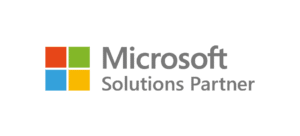The organization’s accumulated knowledge is valuable capital that requires a proper infrastructure. How effectively is information used in your organization?

What is your organization’s competitive advantage in knowledge capital? Does your organization have information about the use of your services or products? Do you have customer metrics that could be used to generate customer input as comparison data and as a way to develop their operations? Is it possible to create a competitive advantage from the information obtained from the order-delivery process?
Information is one of the most critical assets, and its utilization has great potential. It is possible to offer means to increase and enhance performance and create innovations with the help of information. Knowledge capital can be utilized internally and with customers and partners. How does information appear in your organization’s vision and strategy?
From granules of information to information structures
Knowledge capital is built and consumed. Regarding construction, we have found that information is often informal, documentation is incomplete, or metadata is missing. These cause manual work, and the information is not necessarily accumulated for later use but is used only once. Information capital requires proper infrastructure.
The builders of knowledge are our personnel, customers, and partners, i.e., the same roles that consume information.
Making the tacit knowledge of personnel visible and documented advances the accumulation of knowledge capital. Employees are the heart of the organization. When they feel their contribution and insight are valued, they are more motivated to share their knowledge. Create forums such as workshops and networking events where employees can exchange ideas and learn from each other.
Customers are valuable sources of information. Collect feedback, track customer experiences, and share this information with your organization. Doing so improves customer satisfaction and provides your organization with valuable information about market needs and trends.
Information shared with partners can generate effective business models. Combine resources and know-how through joint projects. Collaboration creates a synergy that helps all parties to grow and succeed together.
Investors are looking for solid organizations in terms of their knowledge capital. Show them how your organization uses information as a competitive advantage. The transparency of information creates trust and gives investors a solid foundation to believe in the success of your organization.
Identify the information needs of stakeholders
Stakeholders have their own information needs. The information needs of internal stakeholders may be related to, for example, the following matters:
- How to make better and faster decisions based on facts, evidence, and analysis
- Optimizing resources, processes, and workflows by identifying bottlenecks, gaps, and opportunities for development
- Finding new ideas, solutions, and opportunities to develop a competitive advantage.
External stakeholders are parties outside the organization with an interest or influence on your organization’s activities and outputs. Their information needs can be, for example, the following:
- Identifying and anticipating customers’ behavior and needs
- Coordination and cooperation to enhance the order-delivery process throughout the value chain by sharing information, perspectives, and best practices
- Ensuring the collaboration results comply with industry regulations and statutes by providing accurate, comprehensive, and up-to-date reporting and documentation.
Create a competitive advantage with your information
Use and develop knowledge capital like any other resource.
- Define your organization’s vision and strategy and define how data supports them.
- Identify key stakeholders, their needs, interests, and goals.
- Assess your current knowledge capital and gaps.
- Create an information strategy and roadmap outlining the goals, priorities, and measures for utilizing your information stock.
- Implement and monitor your information strategy and roadmap, measuring results and effects.
For example, would there be customer information that would be a good starting point? We identify what customer information is found in systems, what is in one-off Excel and PowerPoint files, and how the information could be structured and reported by dimension.
Or supplier information as part of responsibility; do we know what quality and responsibility certificates the supplier has when they expire, and how much does each supplier deliver to us?
Would you be interested in discussing the topic further and exploring how the artificial intelligence services and other resources offered by Microsoft can promote the development and utilization of information capital?
Read more about artificial intelligence:
- Using artificial intelligence in business
- Ensure data security before rolling out Copilot
- SharePoint Premium: intelligent information management for vanguard organizations
- Artificial intelligence as a business booster
Marko Koskela
Chief Commercial Officer








